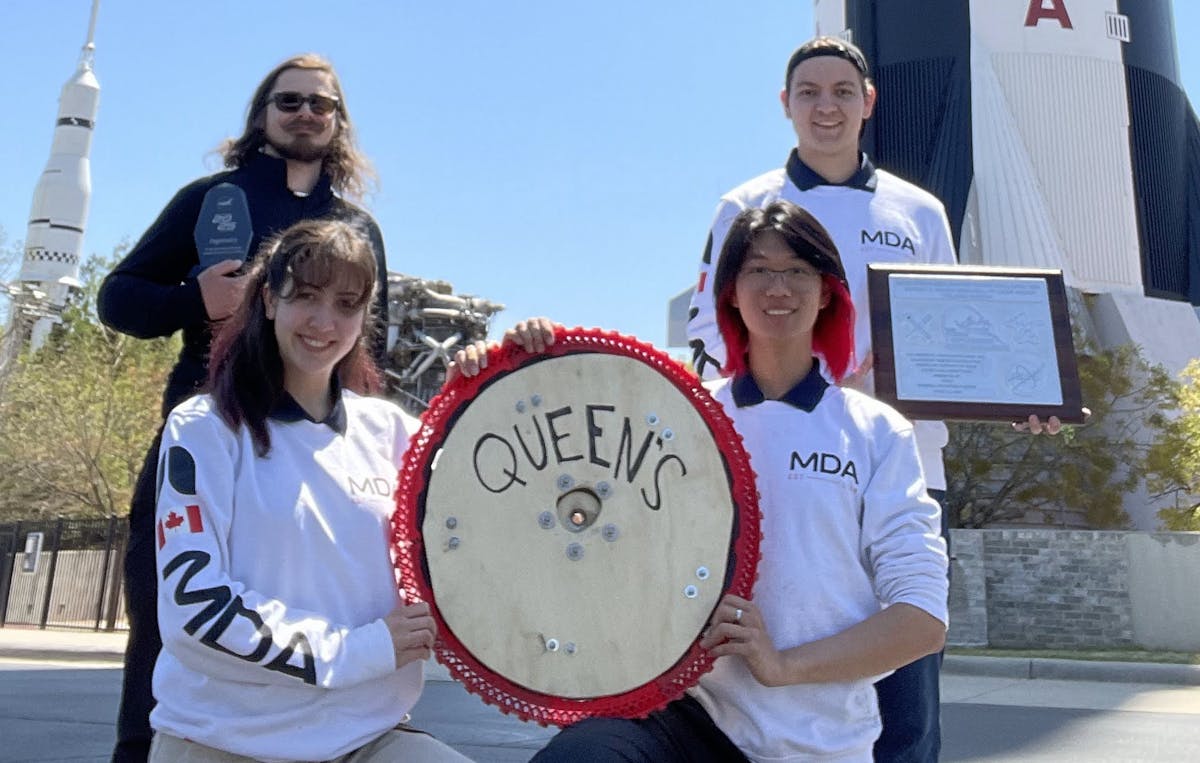Meet the Q-HERC team, a group of talented, curious and passionate Queen’s University students who embarked on a mission to design, build, and test a human powered lunar rover for NASA’s Human Exploration Rover Challenge (HERC). This annual international competition puts students’ skills to the test as they navigate the complexities of developing a rover that can traverse the rugged terrain of the Moon. With only three days to submit their proposal, they threw themselves into the challenge. Then, the real work began.
After receiving their acceptance email in October, the team had just seven months to bring their rover to life, transforming their designs into a fully functional vehicle, all while juggling full-time internships and navigating the complexities of manufacturing, design, and fundraising.
With help from the MDA Space LaunchPad program, Q-HERC received the support and resources they needed to turn their dreams into reality. With guidance from the experienced MDA Space rover team, they refined their design, ensured compliance with competition specifications, and tackled technical challenges head-on.
One of the most innovative aspects of Q-HERC’s design was their wheels. Per NASA requirements, the wheel must be non-pneumatic (airless) and entirely manufactured by the students. “The non-pneumatic wheels were my responsibility, and I was unable to find a design that checked all the boxes,” said Dani Zhao, Co-Team Captain of Q-HERC and a former Systems Design Engineering Student at MDA Space. “Fortunately, since I was working at MDA Space at the time, my co-workers suggested 3D printing. We ended up 3D printing our non-pneumatic wheels using a carbon fiber reinforced nylon filament that could withstand the cyclic and impact loading of the competition.”
As the challenge heated up, the Q-HERC team found themselves in the thick of it, working tirelessly to finalize their rover and overcome last-minute manufacturing difficulties. Then, their hard work paid off when they took home not one, but two awards—the Pit Crew award for their resourcefulness and leadership, and the Ingenuity award for their bold and creative design solutions. Congrats to the full team!
As we look to the future of space exploration and infrastructure, it’s clear that rovers will play a vital role in missions to return to the Moon, and beyond. At MDA Space, we’re committed to supporting the next generation of lunar and Martian explorers as we invest in our surface mobility systems and logistics capabilities with the help of MDA SKYMAKER™ commercial robotics. If you’re an innovative and passionate organization like Q-HERC looking for a partner to help achieve your goals, visit our LaunchPad portal to learn more.
